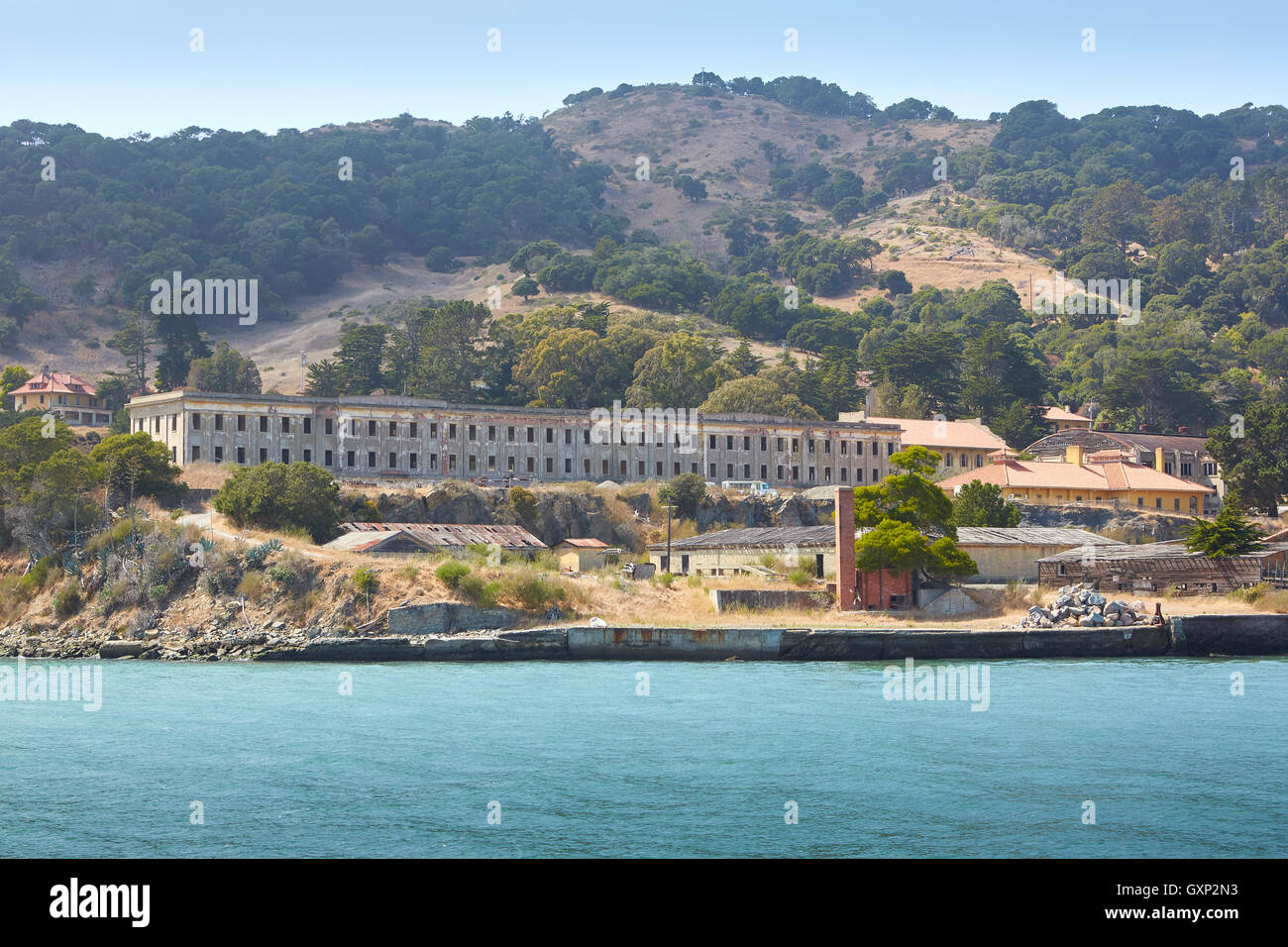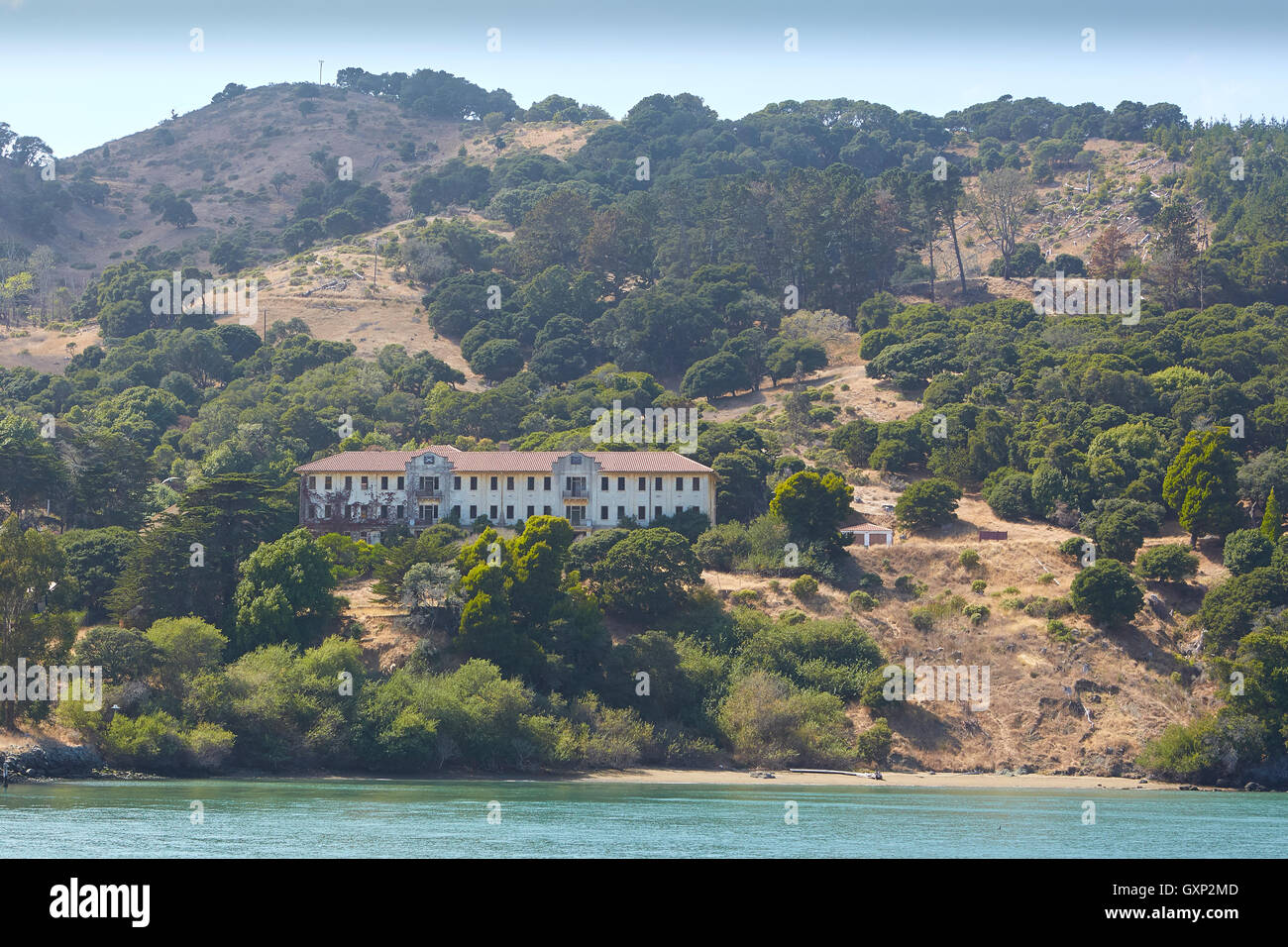
Angel Island’s Silent Sentinel: The Enduring Legacy of Fort McDowell
Perched amidst the swirling mists and often shrouded in the Golden Gate’s dramatic fog, Angel Island stands as a formidable sentinel in San Francisco Bay. While many know it primarily as the "Ellis Island of the West," a poignant gateway for Asian immigrants, the island holds another equally compelling, yet often overshadowed, history: that of Fort McDowell. This vital military post, a bustling hub for over half a century, served as a critical processing center for hundreds of thousands of American soldiers, shaping countless lives and playing an indispensable role in the nation’s wartime efforts. Its story is one of duty, departure, return, and the silent strength of a strategic outpost.
From its strategic vantage point, Angel Island’s military significance was recognized early. Its elevated position offered unparalleled views of the Golden Gate, making it an ideal location for coastal defense. The first military structures began to appear in the late 19th century, transforming the tranquil island into a robust defensive installation. Officially designated Fort McDowell in 1900, after Colonel Irvin McDowell, a Union Army general from the Civil War, the post quickly evolved beyond mere coastal defense. Its true destiny lay in its role as a massive debarkation and embarkation center.
The turn of the 20th century saw the United States emerge as a global power, its reach extending across the Pacific. This expansion, particularly into the Philippines, Hawaii, and other Pacific territories, necessitated a robust logistical infrastructure. San Francisco, with its deep-water port and strategic location, became the natural hub for this trans-Pacific movement. Fort McDowell, positioned directly at the mouth of the bay, became the processing nerve center for troops moving to and from these distant outposts.

Imagine the scene: thousands of young men, fresh from basic training or seasoned by years of service, arriving at Fort McDowell. They would disembark from ferries, their boots clanking on the wooden docks, the salty air filling their lungs. For many, this was their last glimpse of American soil before a long sea voyage into the unknown. The fort provided barracks, mess halls, medical facilities, and administrative offices – a temporary home, a final stop before deployment. Here, uniforms were issued, papers processed, and last-minute medical checks conducted. The air would have crackled with a mixture of nervous anticipation, boisterous camaraderie, and the quiet solemnity of impending departure.
The fort’s function was not merely about shipping soldiers out. It also served as a vital reception center for returning troops, including the sick and wounded. During the Spanish-American War, and later the Philippine-American War, soldiers returning from tropical climates often carried diseases like malaria and dysentery. Fort McDowell included quarantine facilities to prevent the spread of these illnesses to the mainland. This dual role – a gateway both outbound and inbound – made it an indispensable component of the nation’s military readiness.
However, it was during the two World Wars that Fort McDowell truly came into its own, solidifying its place in American military history.
World War I: The Great War’s Western Gateway
As the Great War engulfed Europe in 1914, the United States initially maintained neutrality. But with its entry into the conflict in April 1917, the nation mobilized on an unprecedented scale. While much of the focus was on the Western Front in Europe, the Pacific also required a significant military presence. Fort McDowell became a crucial staging point for troops headed to Siberia, the Philippines, and other Pacific assignments.
During World War I, Fort McDowell was transformed into a bustling cantonment. Its capacity expanded dramatically, with new barracks, hospitals, and administrative buildings springing up to accommodate the surge of personnel. "The island became a beehive of activity," noted a local newspaper at the time, "with soldiers constantly arriving and departing, their uniforms a splash of khaki against the green hills." It’s estimated that over 200,000 soldiers passed through Fort McDowell during this period, a testament to its strategic importance. For these men, Fort McDowell was often the last taste of home before the perils of war, or the first embrace of it upon their return. The ferry ride to the mainland, then as now, would have offered a breathtaking view of the Golden Gate, a symbol of the land they were fighting for.
World War II: The Pacific Theater’s Lifeline
If World War I saw Fort McDowell as a significant player, World War II elevated it to an almost mythical status for those involved in the Pacific Theater. With the attack on Pearl Harbor in December 1941, the United States was thrust into a global conflict of immense proportions, with the Pacific becoming a primary battleground. Fort McDowell became the premier "Port of Embarkation" on the West Coast for hundreds of thousands of troops heading to the fight against Imperial Japan.

From the sandy beaches of Guadalcanal to the volcanic ash of Iwo Jima, the jungles of the Philippines to the icy waters of the Aleutians, American soldiers traversed the vast Pacific. And for many, their journey began or ended at Fort McDowell. The sheer volume of traffic was staggering. Troopships, hospital ships, and supply vessels constantly plied the waters between the island and the mainland, loading and unloading their precious cargo of humanity and materiel.
"You knew you were really going to war when you hit Angel Island," recalled one veteran of the Pacific campaign. "It was the last stop. You looked back at the Golden Gate, and you just hoped you’d see it again." The fort hummed with an incessant energy. Soldiers underwent final processing, received their combat gear, and sometimes enjoyed a last meal in civilian clothes before donning their uniforms for the arduous journey ahead. For those returning, often wounded or deeply scarred by their experiences, Fort McDowell provided immediate medical care, a place of respite, and the first steps on the long road to recovery. Nearly 300,000 soldiers are estimated to have passed through the fort during World War II, making it one of the busiest military installations in the nation.
Beyond its role as a transit point, Fort McDowell also housed a prisoner-of-war camp during both World Wars. German and Italian POWs were held here, working on various projects around the island, often in view of the very bay through which American troops were sailing to confront their countrymen. This added another layer of complexity to the island’s already multifaceted identity.
Life on the Island: Beyond the Barracks
Life at Fort McDowell was a unique blend of military rigor and the island’s inherent beauty. Despite the intense activity, the soldiers and their families who were stationed there also experienced the peculiar isolation and charm of island living. The dense fog, a characteristic feature of the Bay Area, could envelop the island for days, creating an ethereal, almost otherworldly atmosphere. Yet, on clear days, the views of San Francisco, Alcatraz, and the Golden Gate were spectacular, a constant reminder of their strategic location.
Recreational facilities were provided, including a gymnasium, a post exchange (PX), and a movie theater. Soldiers could fish off the docks or explore the island’s winding trails. For the families of officers and enlisted personnel stationed there, life offered a certain serenity, albeit one punctuated by the constant arrival and departure of troops. Children grew up with the sounds of bugles and marching feet, their playground a historical landmark.
Decline and Legacy
With the end of World War II and the dawn of the Cold War, military logistics began to change dramatically. Air travel became increasingly prevalent, diminishing the need for massive sea-based embarkation centers. Fort McDowell’s strategic importance gradually waned. In 1946, the fort was deactivated, its bustling barracks falling silent, its parade grounds empty. The buildings, once teeming with life and purpose, began to succumb to the elements, silent witnesses to a bygone era.
In 1954, the U.S. Army officially transferred control of most of Angel Island to the State of California. The island was designated a State Park in 1963, preserving its natural beauty and rich history for future generations. Today, visitors to Angel Island State Park can still explore the remnants of Fort McDowell. The officers’ quarters, the barracks, the hospital, and the guardhouse stand as poignant relics, offering a tangible connection to the past. Interpretive signs and exhibits help bring the fort’s story to life, detailing its vital role in the nation’s military history.
While the Angel Island Immigration Station, with its heart-wrenching tales of detention and the powerful poetry carved into its walls, rightly captures much of the island’s historical spotlight, Fort McDowell deserves equal recognition. It was a crucible of courage, a portal to the Pacific, and a silent sentinel guarding the Golden Gate. For hundreds of thousands of American soldiers, it was the place where their journey into military service truly began or triumphantly ended.
Fort McDowell’s legacy is not just about brick and mortar, or the numbers of soldiers processed. It is about the human stories contained within those numbers: the nervous young recruits, the battle-hardened veterans, the doctors and nurses, the families bidding farewell. It reminds us of the immense logistical challenges of wartime, the critical importance of preparedness, and the profound impact of global conflicts on individual lives. Angel Island, with its dual history of immigration and military service, serves as a powerful reminder of the complex tapestry of American experience – a place where hope and duty, fear and courage, converged amidst the bay’s enduring beauty. Its silent structures continue to speak volumes, inviting us to listen to the echoes of a past that shaped the nation.


